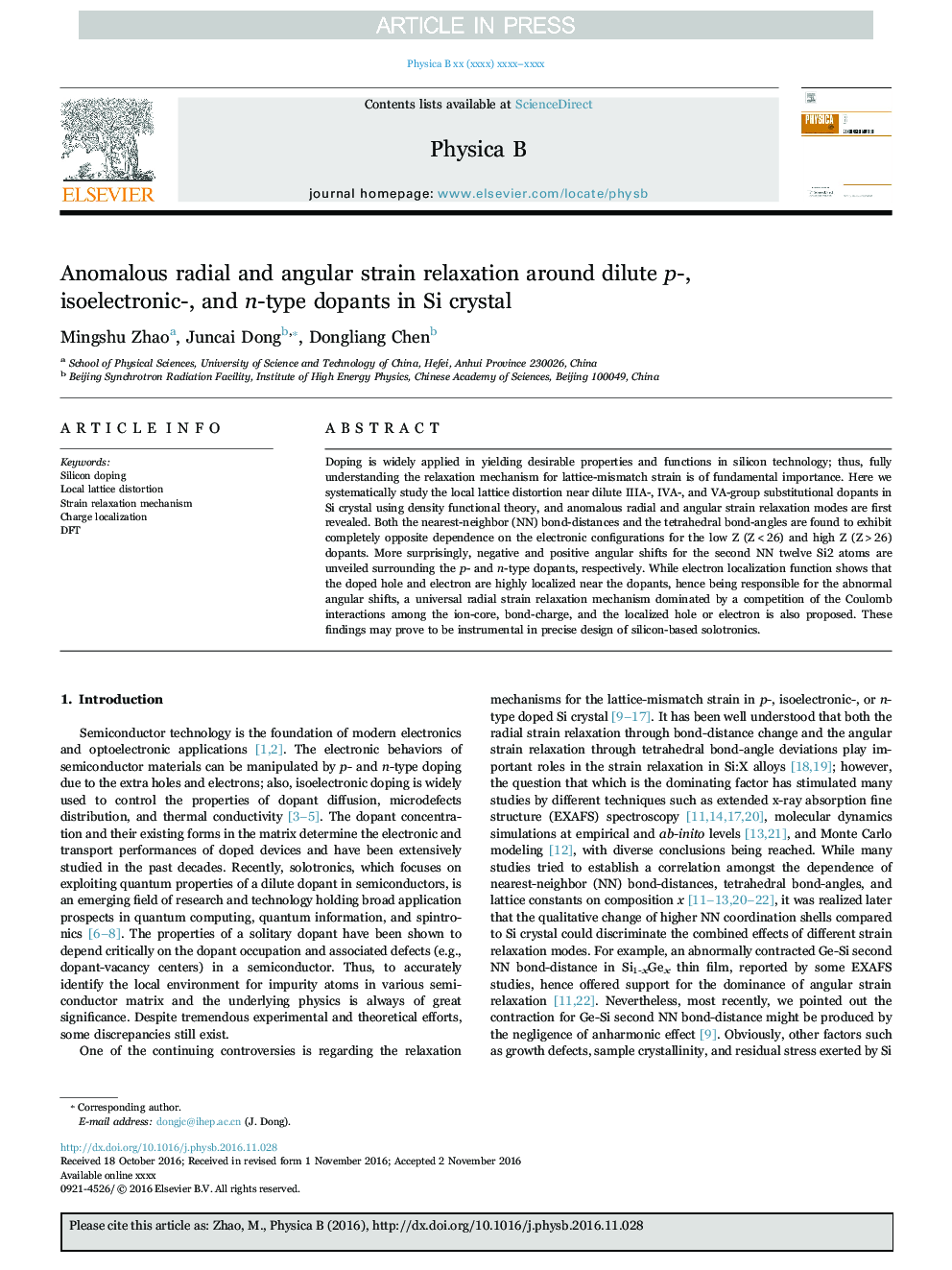| Article ID | Journal | Published Year | Pages | File Type |
|---|---|---|---|---|
| 5492183 | Physica B: Condensed Matter | 2017 | 7 Pages |
Abstract
Doping is widely applied in yielding desirable properties and functions in silicon technology; thus, fully understanding the relaxation mechanism for lattice-mismatch strain is of fundamental importance. Here we systematically study the local lattice distortion near dilute IIIA-, IVA-, and VA-group substitutional dopants in Si crystal using density functional theory, and anomalous radial and angular strain relaxation modes are first revealed. Both the nearest-neighbor (NN) bond-distances and the tetrahedral bond-angles are found to exhibit completely opposite dependence on the electronic configurations for the low Z (Z<26) and high Z (Z>26) dopants. More surprisingly, negative and positive angular shifts for the second NN twelve Si2 atoms are unveiled surrounding the p- and n-type dopants, respectively. While electron localization function shows that the doped hole and electron are highly localized near the dopants, hence being responsible for the abnormal angular shifts, a universal radial strain relaxation mechanism dominated by a competition of the Coulomb interactions among the ion-core, bond-charge, and the localized hole or electron is also proposed. These findings may prove to be instrumental in precise design of silicon-based solotronics.
Related Topics
Physical Sciences and Engineering
Physics and Astronomy
Condensed Matter Physics
Authors
Mingshu Zhao, Juncai Dong, Dongliang Chen,
